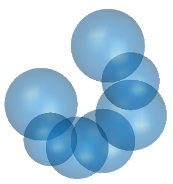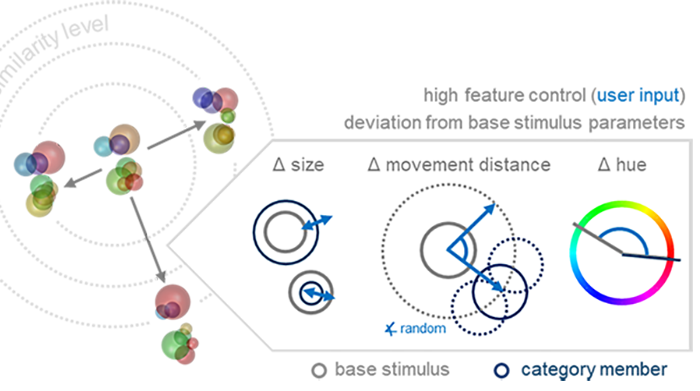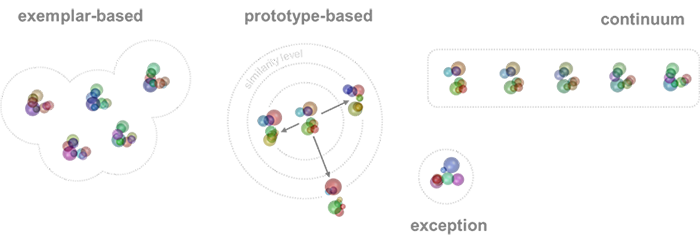 RUBubbles – a novel tool to study categorization learning
RUBubbles – a novel tool to study categorization learning
We have developed a novel stimulus type to study categorization learning: Bubbles consist of an arbitrary number of colored spheres that are arranged in 3D. Several MATLAB functions and an additional APP allow a high degree of customization of individual stimulus dimensions (position, size, and color) at low computation costs. This makes bubbles the perfect stimulus type to study categorization learning.
Download
![]()
![]() Copyright Aylin Apostel and Jonas Rose.
Copyright Aylin Apostel and Jonas Rose.
Contact: Aylin Apostel, rububbles-app@ruhr-uni-bochum.de
The ability to group objects into discrete categories affects how we perceive the world and represents a crucial element of cognition. Categorization is a widespread phenomenon in the animal kingdom that has been thoroughly studied. However, investigating categorization learning poses several requirements on the stimulus set in order to control which stimulus feature is used and to prevent mere stimulus-response associations or rote learning.
Previous studies have used a wide variety of both naturalistic and artificial categories, the latter having several advantages such as better control and more direct manipulation of stimulus features. For instance, subjects had to differentiate between the presence and absence of humans in photographs, trees versus no-tree objects, Picasso and Monet paintings, animate versus inanimate objects, basic geometric shapes, binary multi-featured cartoon animals, digital embryos and much more.
We have developed a novel stimulus type to study categorization learning, which allows a high degree of customization at low computation costs and can thus be used to generate large stimulus sets very quickly. This is important to study categorization learning for which large session-unique stimulus sets are necessary. ‘Bubbles’ are designed as an artificial category stimulus type by arranging an arbitrary number of colored spheres in a 3D space.
Bubbles are generated using custom MATLAB code in which several stimulus parameters can be adjusted and controlled separately, such as the number of spheres, 3D sphere position, size, and color. Bubble categories are produced by designing a category base stimulus and then defining the deviations from this base stimulus for each stimulus feature to generate all other category members. Thereby it is possible, to control within-category similarity and to specify the variability of different features. 
Various bubble generation algorithms can be combined with distinct behavioral training protocols to investigate different characteristics and strategies of categorization learning, such as prototype- vs exemplar-based learning approaches, different abstraction (≙ similarity) levels, or the categorization of a sensory continuum and category exceptions. 
All necessary MATLAB code is freely available and can be customized or expanded depending on individual needs (download here). We have further implemented all functions and additional features in a graphical user interface. The RUBubblesAPP can be used to precisely customize base stimuli, create bubble categories, and allows an easier manipulation for user with less coding experience. Additional MATLAB live scripts illustrate the creation process and ensure a user-friendly testing and implementation. If you are interested and have further questions or comments do not hesitate to contact us.
